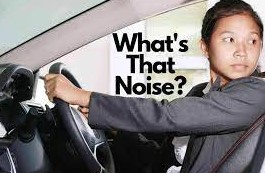One of the most common reasons that your car jerks, when put in reverse or drive, is because your transmission is not completely engaged. The first step to diagnosing this problem is to check under the hood and make sure that you don’t see any leaks. If there aren’t any leaks, then your next step should be to check the fluid levels.
You can do this by opening up the dipstick and making sure that everything looks okay. If you’re close to needing a new fluid change, then it may help to solve this problem. Another reason for jerky movement could be a bad connection between your vehicle’s battery and the starter motor.
This could cause a host of problems with starting up your car, including jerkiness when going in reverse or forward motion. If you suspect this might be an issue, then try starting up the engine with just one key turn on each side of the ignition switch you’ll know right away if there’s an issue here.
Causes of jerking when driving
The first is that the transmission is not engaging properly, which can happen if the fluid level is low or the gearbox needs to be replaced. If this is the problem, then you will need to get a mechanic to check out your car.
Another reason could be that you have a loose battery terminal connection or poor electrical connections in general, which can cause them to spark when they engage. These sparks are caused by resistance in the circuit and can cause your car’s engine to misfire when you engage the gears.
This will result in jerking movements as well as an increase in friction between moving parts that causes additional problems with fuel economy and performance. A third reason could be that there are foreign objects lodged between gear teeth inside the transmission housing itself or within other components associated with its operation such as gears or driveshafts themselves these objects could include sand particles for example which may have gotten inside due to lack of regular maintenance such as changing oil filters every six months.
Which would allow them access into these areas where they would otherwise not be present unless something was wrong with either your car’s engine itself or others.
Signs that your car is jerking when driving?
When you’re driving, jerking is not something you want to have to deal with. It can cause your car to lurch forward or backward unexpectedly, which can be scary for you and other drivers on the road.
If you’re experiencing jerking when driving, there are some things you can do to help prevent it from happening. Here are some signs that your car is jerking when driving.
Your steering wheel is shaking back and forth. Your car feels like it’s going faster than normal. You hear loud noises coming from the engine. Your tires squeal when you turn a corner
How to fix jerking when driving?
Check your tires. If they need replacing, that could be causing your jerking motion. If they don’t look worn out, try rotating them. This helps distribute wear evenly across all four tires so they last longer and don’t wear unevenly.
Check the alignment of your wheels and make sure they’re not damaged. If everything looks good there too, then it’s probably just a matter of getting the car serviced by someone who knows what they’re doing like our team.
Check the transmission fluid level
The problem is often due to low transmission fluid levels. If the transmission fluid level is too low, it can create a problem with the gears shifting properly. This can cause jerking when you put your car in reverse or drive.
What are some other things that could cause my car to jerk when put in reverse or driving?
A failed torque converter clutch assembly. This is a part of the transmission that helps engage and disengage the engine from the transmission. It has been known to fail over time due to wear and tear, causing jerking when put in reverse or driven because it isn’t working properly.
A failed torque converter seal assembly. This part of the transmission keeps oil from leaking out into places where it’s not supposed to go like your driveway! If this seal fails, oil can leak out and cause the transmission fluid to burn up quickly. This can lead to jerking when put in reverse or drive because there isn’t enough fluid left inside to lubricate everything properly.
Conclusion
Your car’s jerking, when put in reverse or drive, may be caused by a few different things. Check the transmission fluid level it may be low, which can cause your car to shift poorly. If that doesn’t work, try replacing the transmission filter and gasket. If neither of those fixes the problem, then you might need to take it to a mechanic for further diagnostics.


